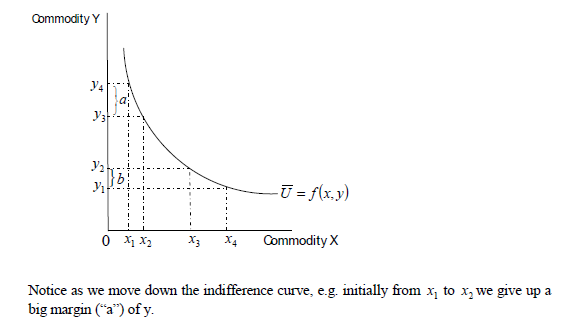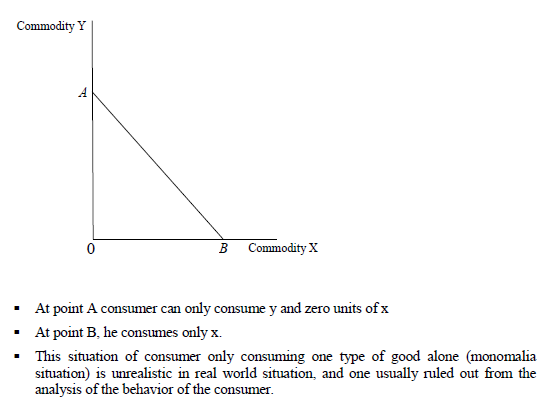1. An indifference curve has a negative slope, which denotes that if the quantities of one commodity (y) decreases, the quantity of the other (x) must increase, if the consumer is to stay on the same level of satisfaction.
2. The further away from the origin an indifference curve lies, the higher the level of utility it denotes and the bundles of goods it represents are preferred by the rational consumer.
3. Indifference curves do not intersect.
If indifference curve 1 U and 2 U intersect, it would mean that at point p, we could have two different levels of satisfaction, which is impossible. Point p has same satisfaction as point A since they both lie on the same indifference curve 1 U .Also note that to the left of point p, indifferent curve 1 U is above 2 U , and to the right it is the opposite case. Thus ranking of bundle of goods would be ambiguous.
4. Indifference curves are convex to the origin, implying that their slope decreases (in absolute terms) as we move down from left to right.
This property is in line with the assumption of diminishing marginal rate of substitution. The number of units of y the consumer is willing to sacrifice in order to obtain an additional unit of x decreases as the quantity of x increases.

As we continue downwards, consumer continue to reduce the amount of y he would be willing to give up for x. that is why consumer continue to give up lesser quantities of y as he moves downwards the indifference curve. That is, it becomes increasingly difficult to substitute one commodity for another as we move along the indifference curve.
Note:
If x and y are perfect substitutes, the indifference curve becomes a straight line with negative slope.

kevinnyabute answered the question on
February 21, 2018 at 08:39